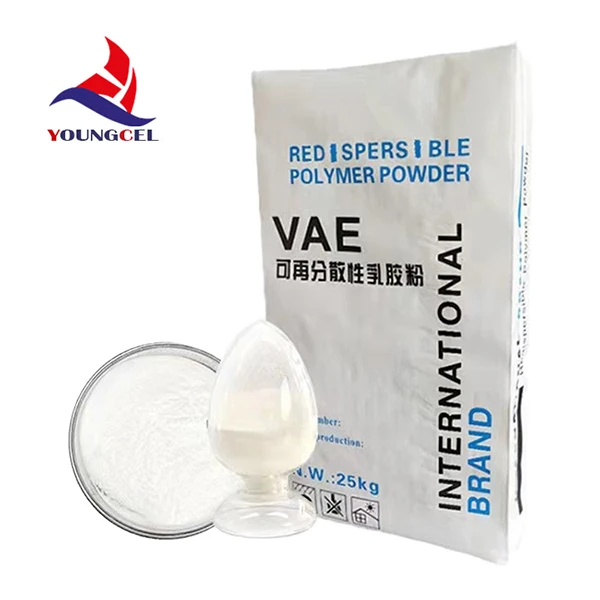Harnessing HPMC for Tile Adhesives A Comprehensive Overview
In the realm of construction and renovation, the choice of materials plays a crucial role in determining the longevity and effectiveness of any project. Among the various construction materials, tile stands out for its versatility and aesthetic appeal. However, the success of tile installation hinges significantly on the adhesive used to secure it. Hydroxypropyl Methylcellulose (HPMC) has emerged as a preferred ingredient in tile adhesives, offering a range of advantages that cater to the demands of modern construction.
What is HPMC?
HPMC is a semi-synthetic polymer derived from cellulose, a natural polymer found in plant cell walls. By modifying cellulose through hydroxypropyl and methyl etherification, HPMC is produced as a white, odorless powder. This compound has a unique chemical structure that imparts desirable properties such as water retention, improved workability, and enhanced adhesion.
Importance of HPMC in Tile Adhesives
1. Water Retention One of the key benefits of incorporating HPMC into tile adhesives is its exceptional water-retaining capability. In tile installations, adequate moisture is vital for proper adhesion and curing. HPMC retains moisture in the mixture, allowing for longer workability and providing the necessary conditions for the adhesive to bond effectively with both the tile and substrate. This property is particularly important in warmer climates where rapid evaporation can compromise adhesion.
2. Improved Workability The addition of HPMC enhances the flow characteristics of tile adhesives, making them easier to spread and manipulate during installation. This improved workability translates to a more user-friendly application process, allowing tilers to achieve a uniform layer without the risk of clumping or uneven application. Consequently, this not only speeds up the installation process but also results in better aesthetic outcomes.
3. Enhanced Adhesion HPMC contributes to the overall bond strength of tile adhesives. Its unique properties allow for better interlocking between the adhesive and both the tile and substrate, ensuring a durable and long-lasting installation. This increased adhesion is crucial in areas subject to movement or thermal expansion, as it minimizes the risk of tile slippage or detachment over time.
hpmc for tile

4. Environmental Resistance Tile installations are often exposed to various environmental stresses, including moisture, temperature changes, and chemicals. HPMC-modified adhesives demonstrate improved resistance to these factors, which ensures the integrity of the installation over time. This robustness is particularly beneficial in spaces like bathrooms and kitchens, where tiles are regularly subjected to water and humidity.
5. Versatility HPMC can be used in a wide variety of formulations, adapting well to different types of tile adhesives, whether they are cement-based or ready-mixed. This versatility allows manufacturers to design products tailored to specific application requirements, whether for interior, exterior, or specialized installations like swimming pools or commercial spaces.
Application of HPMC in Tile Adhesives
The incorporation of HPMC in tile adhesives involves careful formulation. Manufacturers typically blend HPMC with other key ingredients such as cement, sand, and various additives to create a balanced product that meets industry standards for performance. The ratio of HPMC can vary depending on the desired properties; for example, higher concentrations may be used in conditions that require enhanced water retention or workability.
Conclusion
The integration of Hydroxypropyl Methylcellulose in tile adhesives has revolutionized the way tiles are installed across the globe. With its remarkable properties including water retention, improved workability, and enhanced adhesion, HPMC not only simplifies the application process but also ensures the durability and longevity of tile installations. As the construction industry continues to evolve, the demand for high-performance materials like HPMC will likely rise, making it a staple in the formulation of tile adhesives.
Whether you are a contractor, architect, or DIY enthusiast, understanding the significance of HPMC in tile adhesives can lead to more successful and aesthetically pleasing installations, promising designs that stand the test of time. The future of tiling is undeniably linked to the continued use and innovation surrounding this remarkable polymer.
-
Rdp Powder: Key Considerations for Wholesalers in the Building Materials IndustryNewsJul.08,2025
-
Key Considerations for Wholesalers: Navigating the World of Hpmc - Based ProductsNewsJul.08,2025
-
Hpmc Detergent: Key Considerations for WholesalersNewsJul.08,2025
-
Key Considerations for Wholesalers: China Hpmc For Tile Adhesive, Coating Additives, Concrete Additives, and MoreNewsJul.08,2025
-
Crucial Considerations for Wholesalers: Navigating the World of Construction MaterialsNewsJul.08,2025
-
Key Considerations for Wholesalers Sourcing Additive For Cement, Additive For Concrete, Additive For Putty from Additive Manufacturer Shijiazhuang Gaocheng District Yongfeng Cellulose Co., Ltd.NewsJul.08,2025




